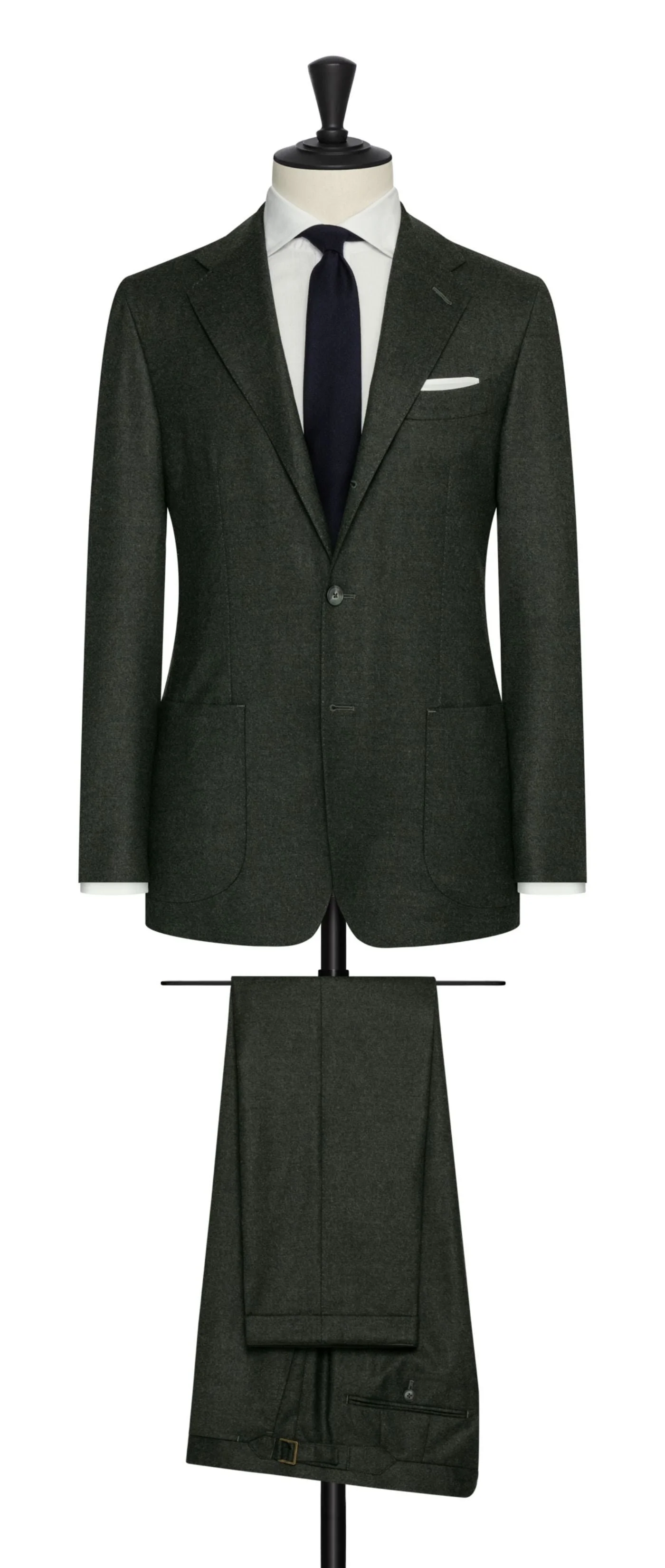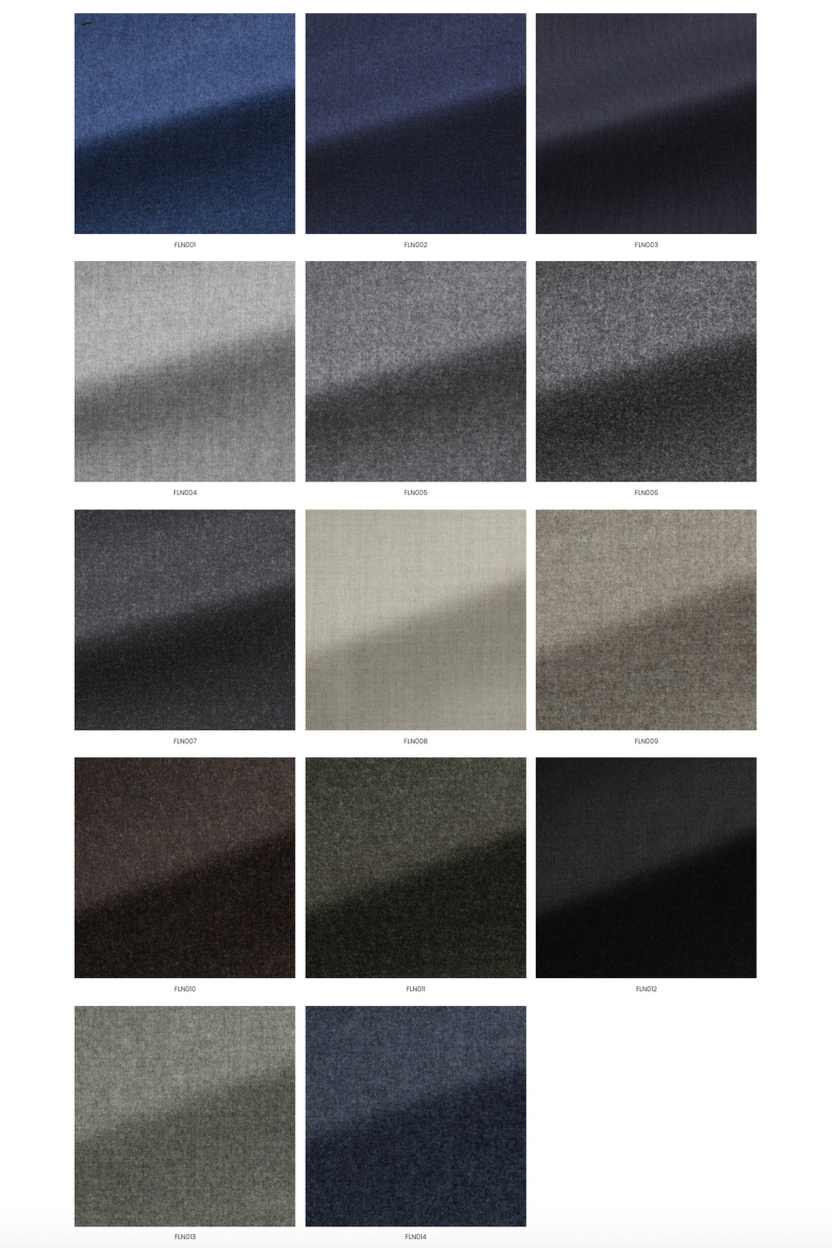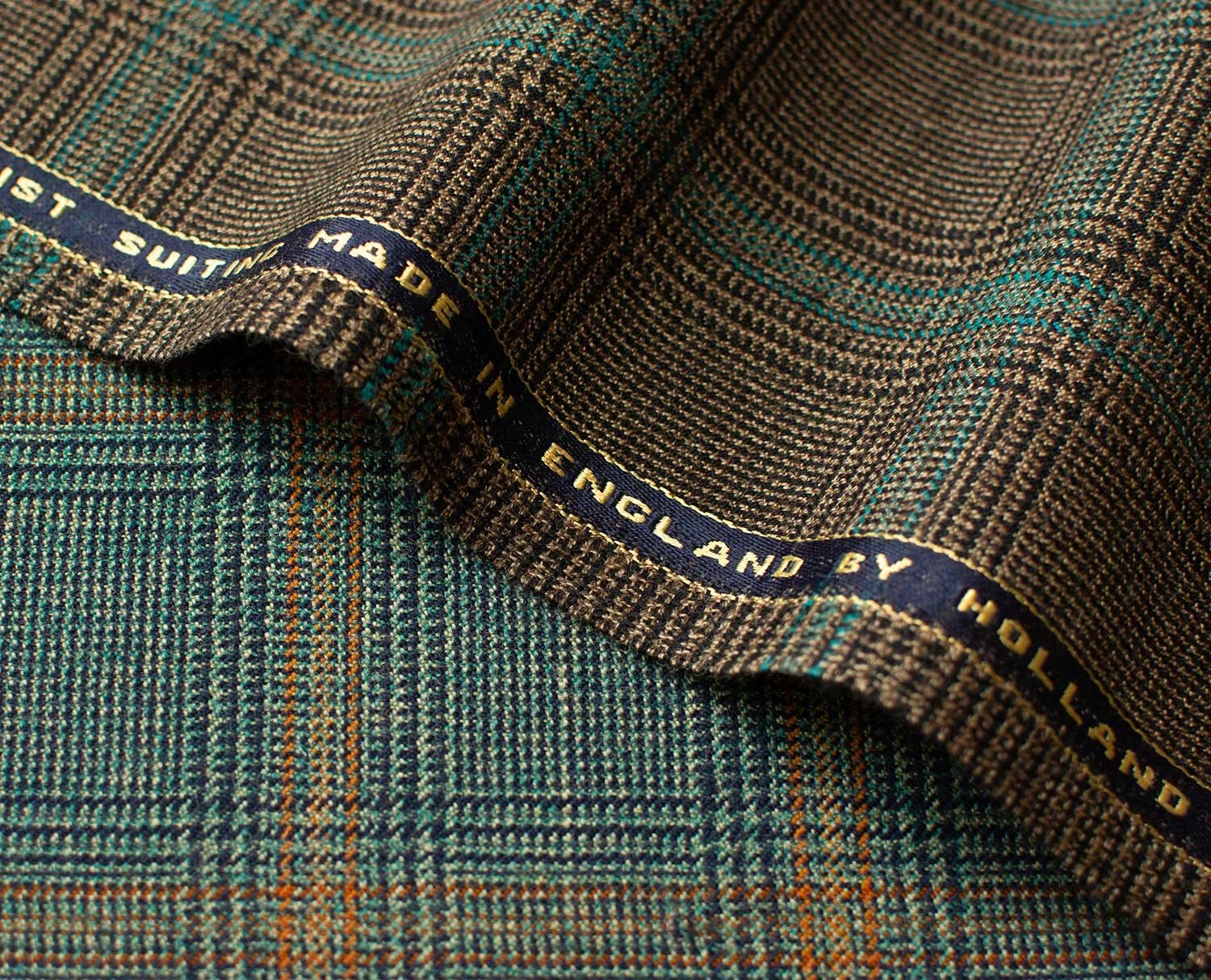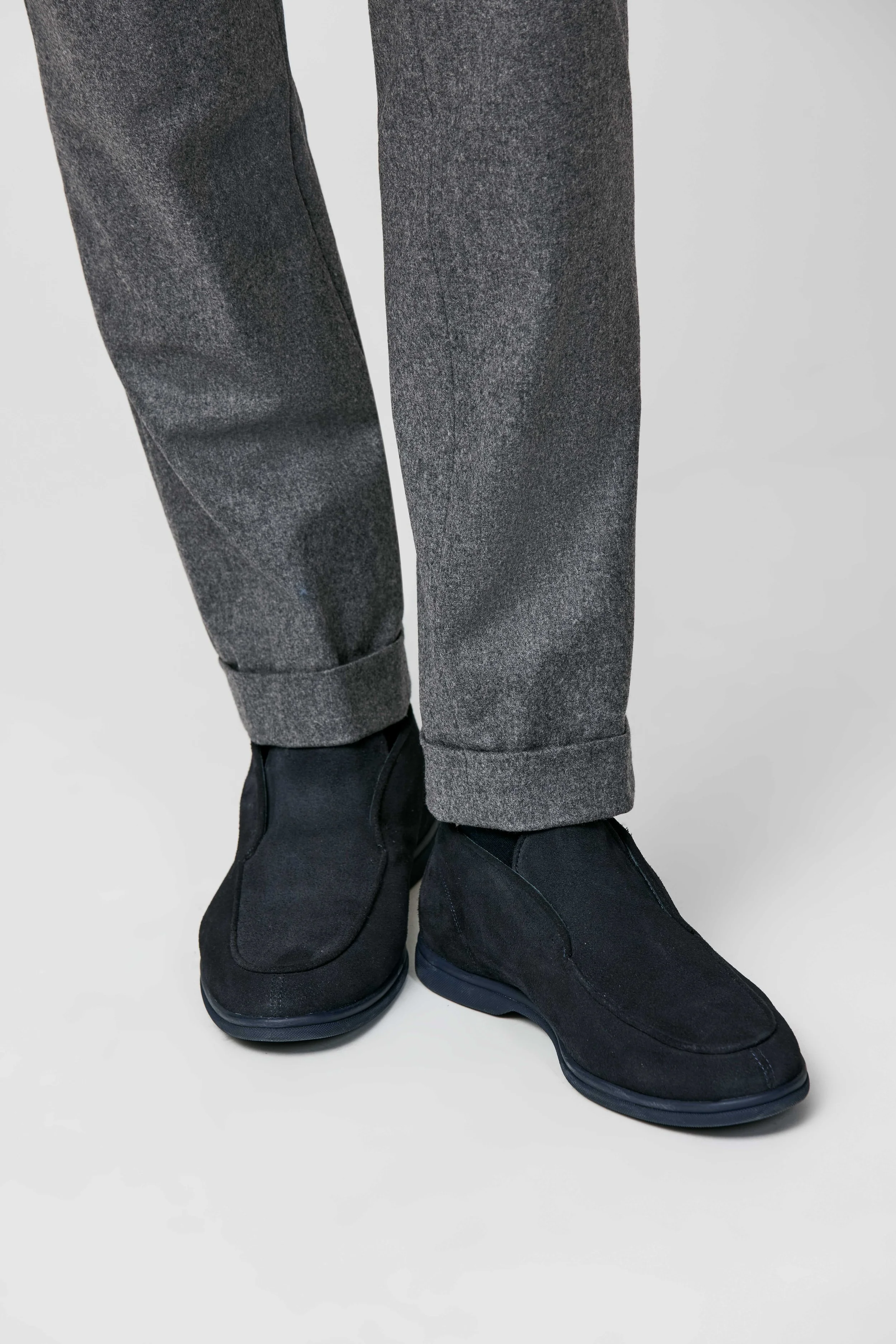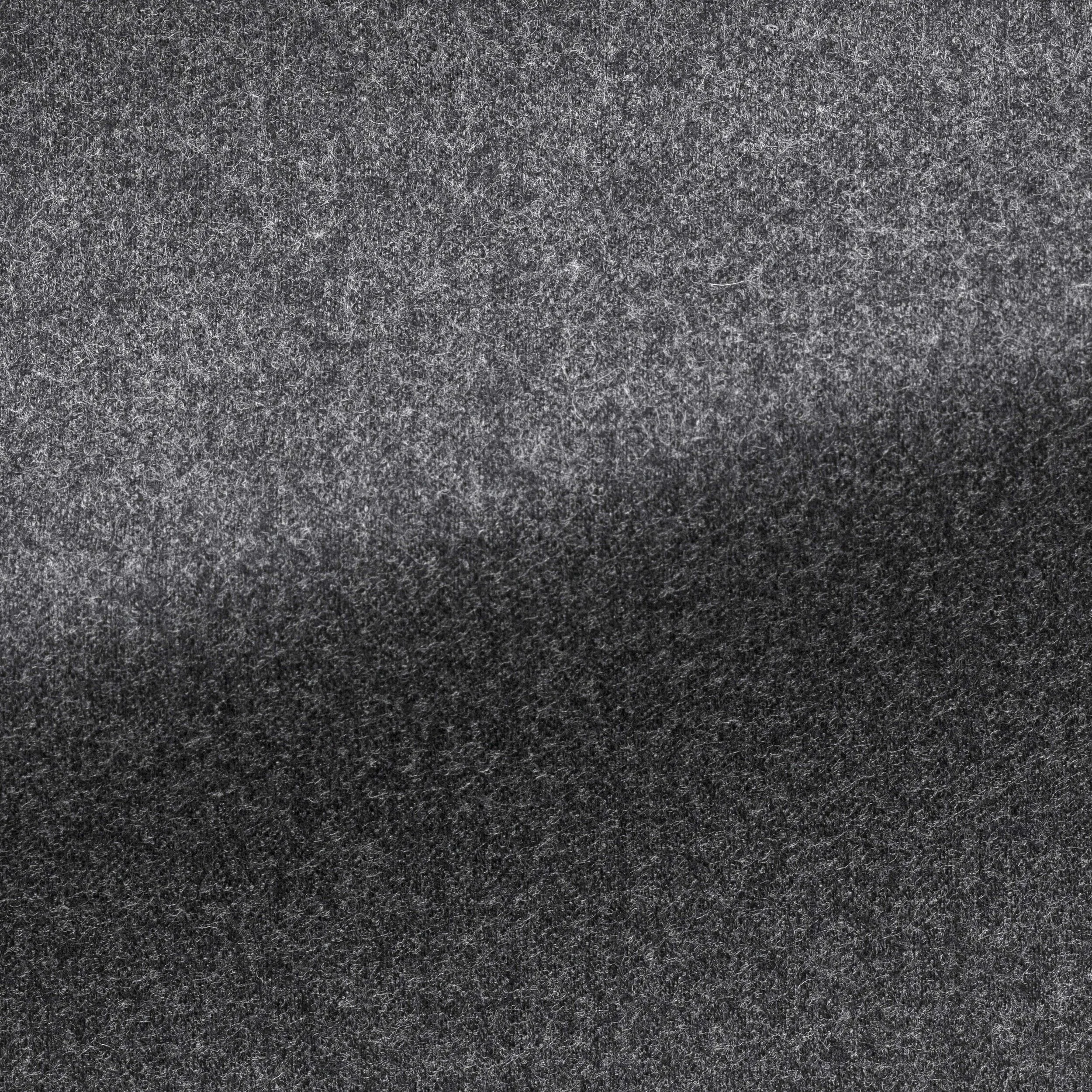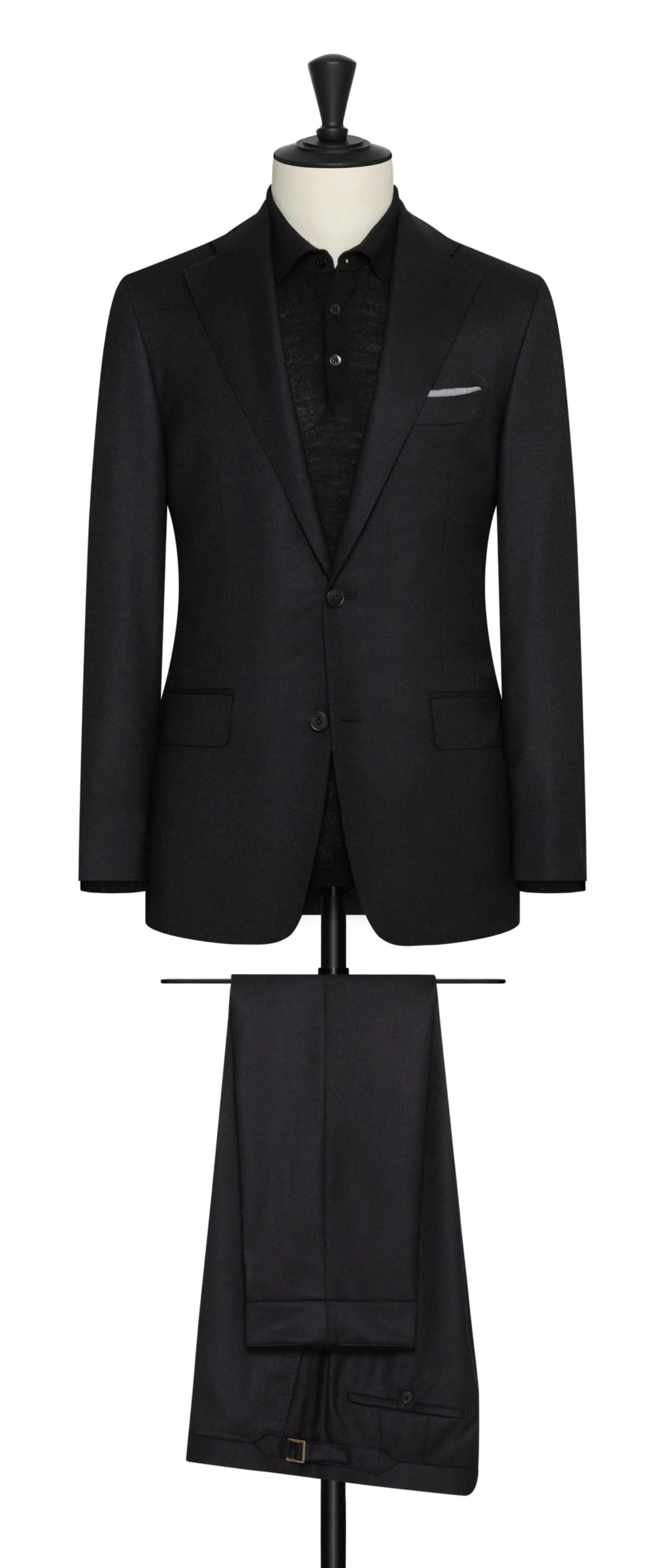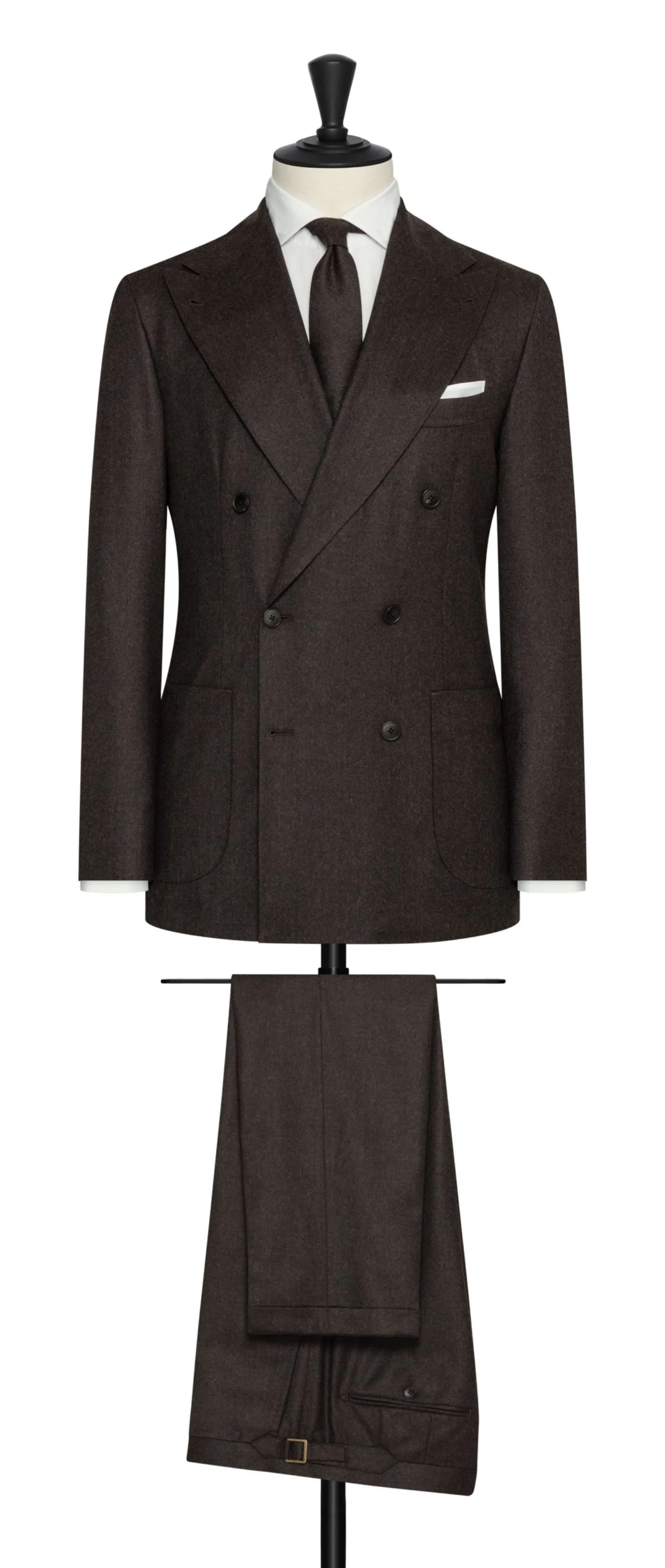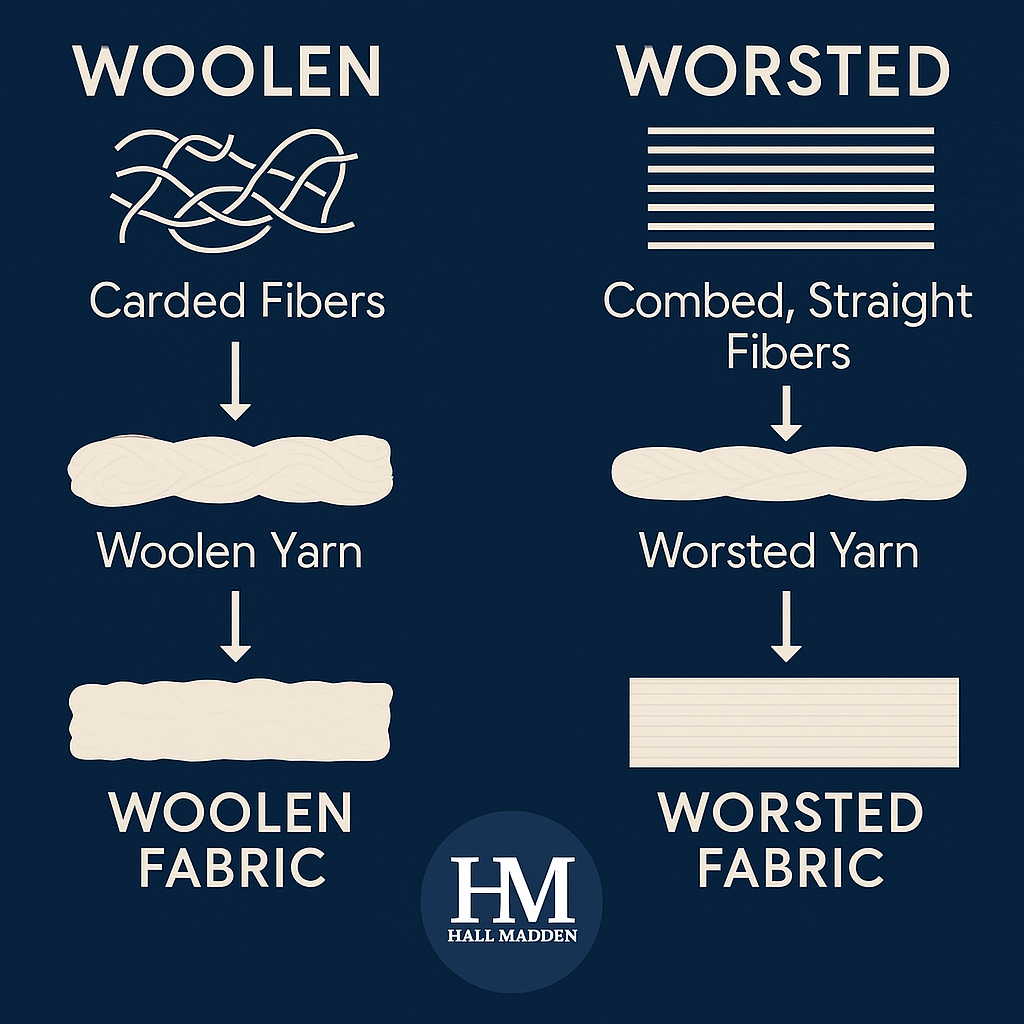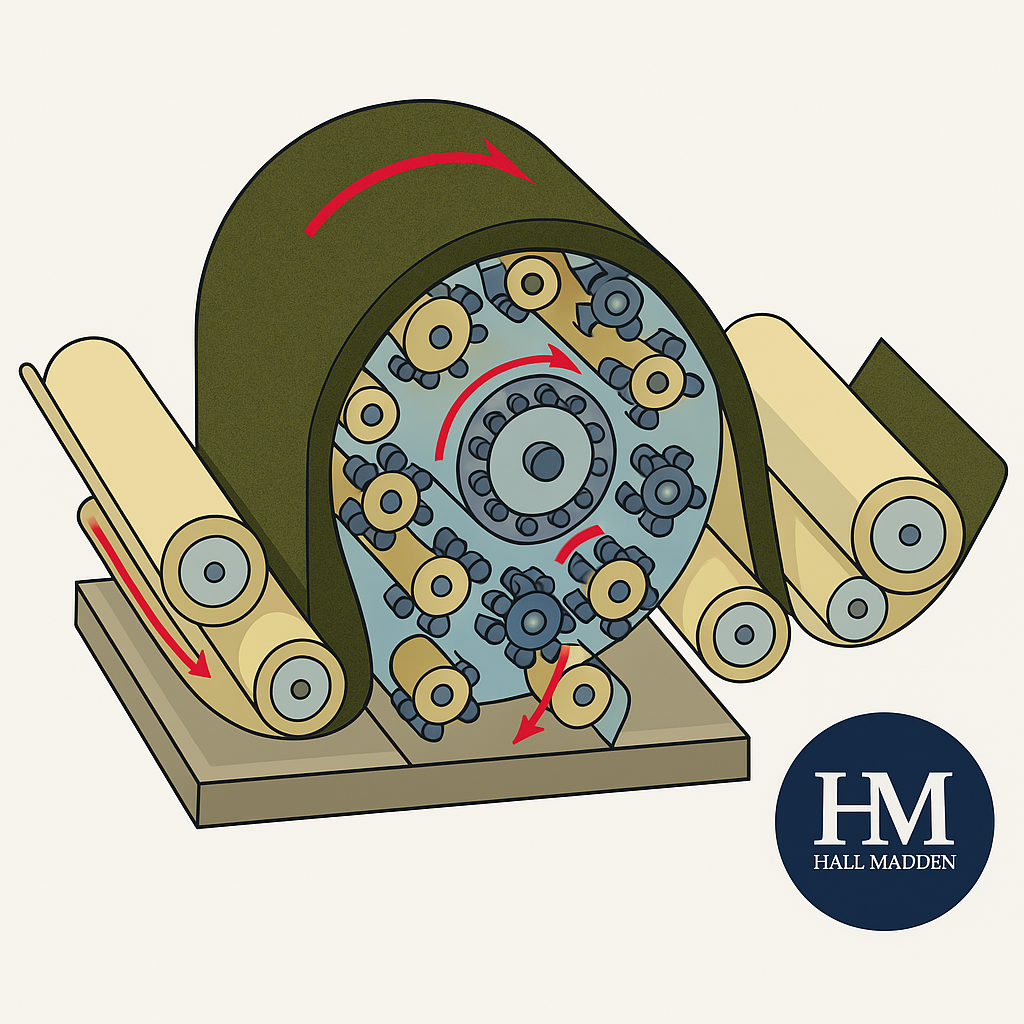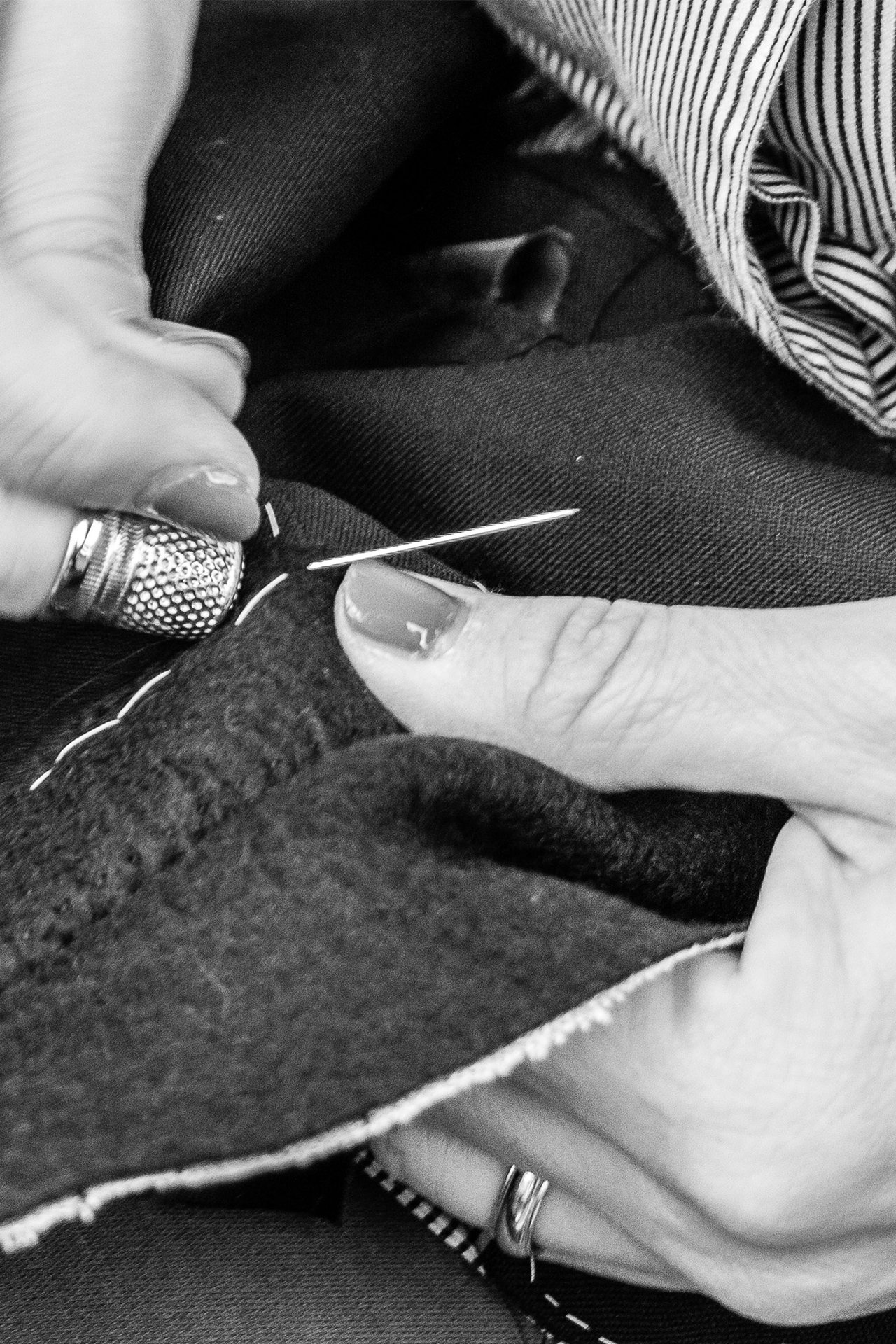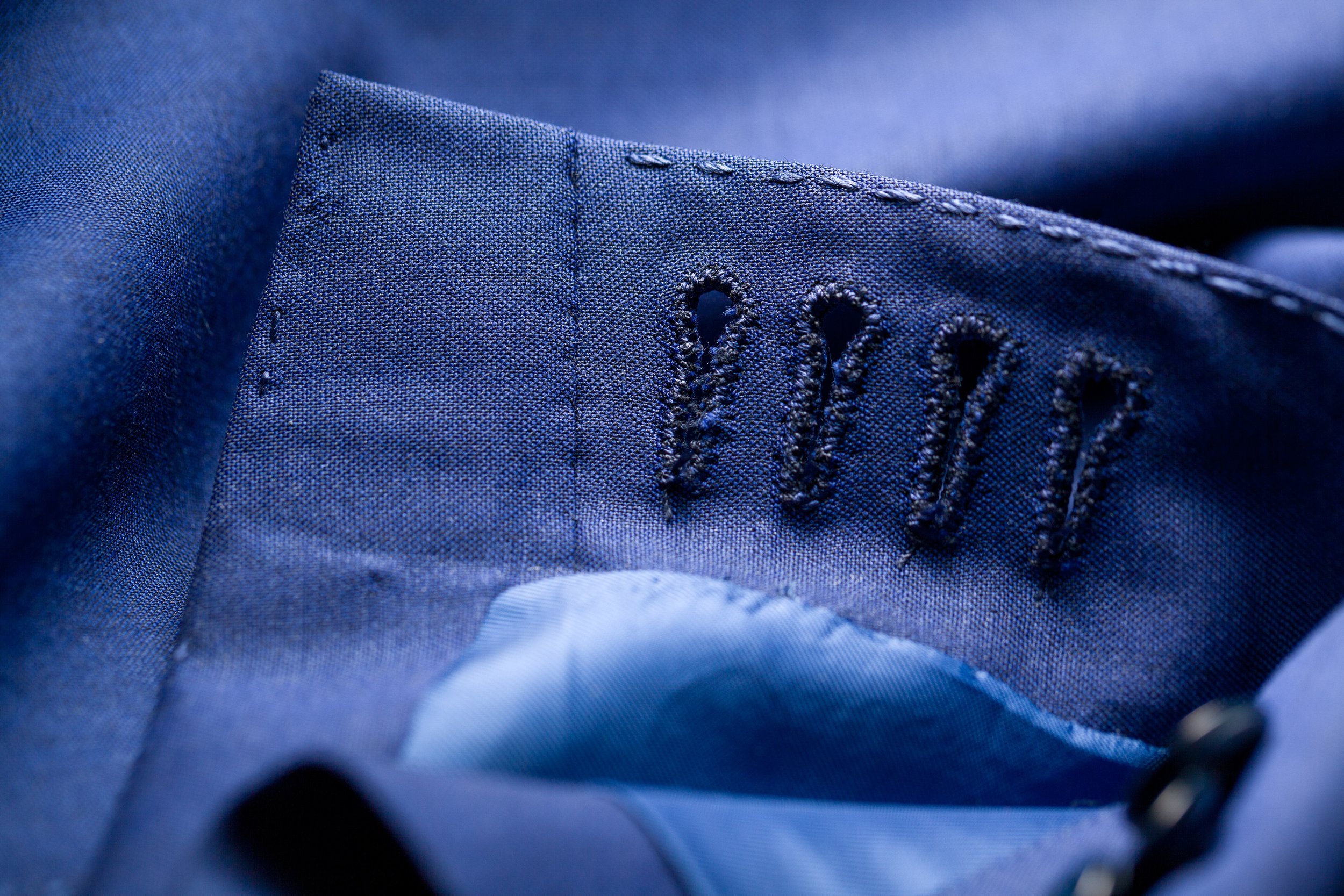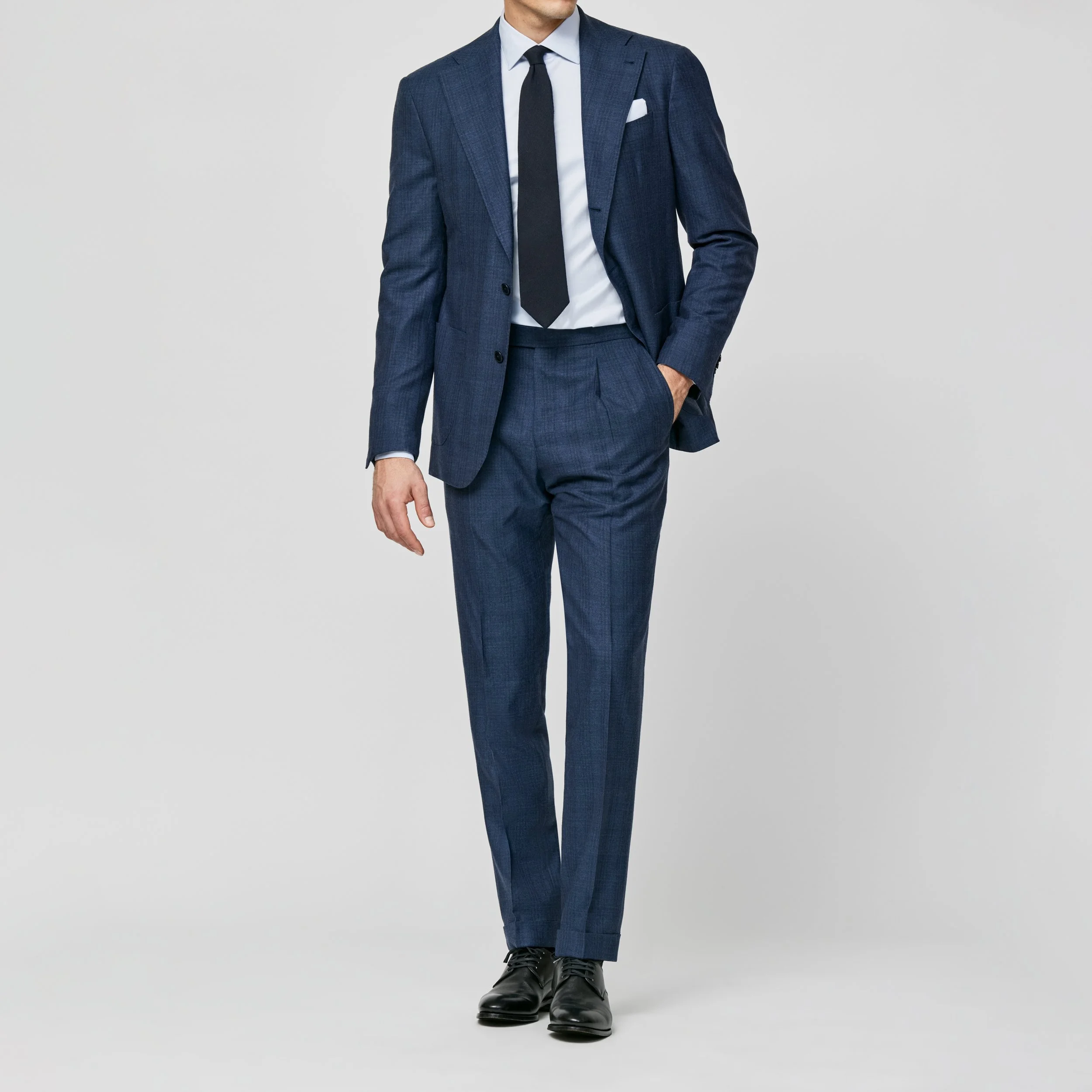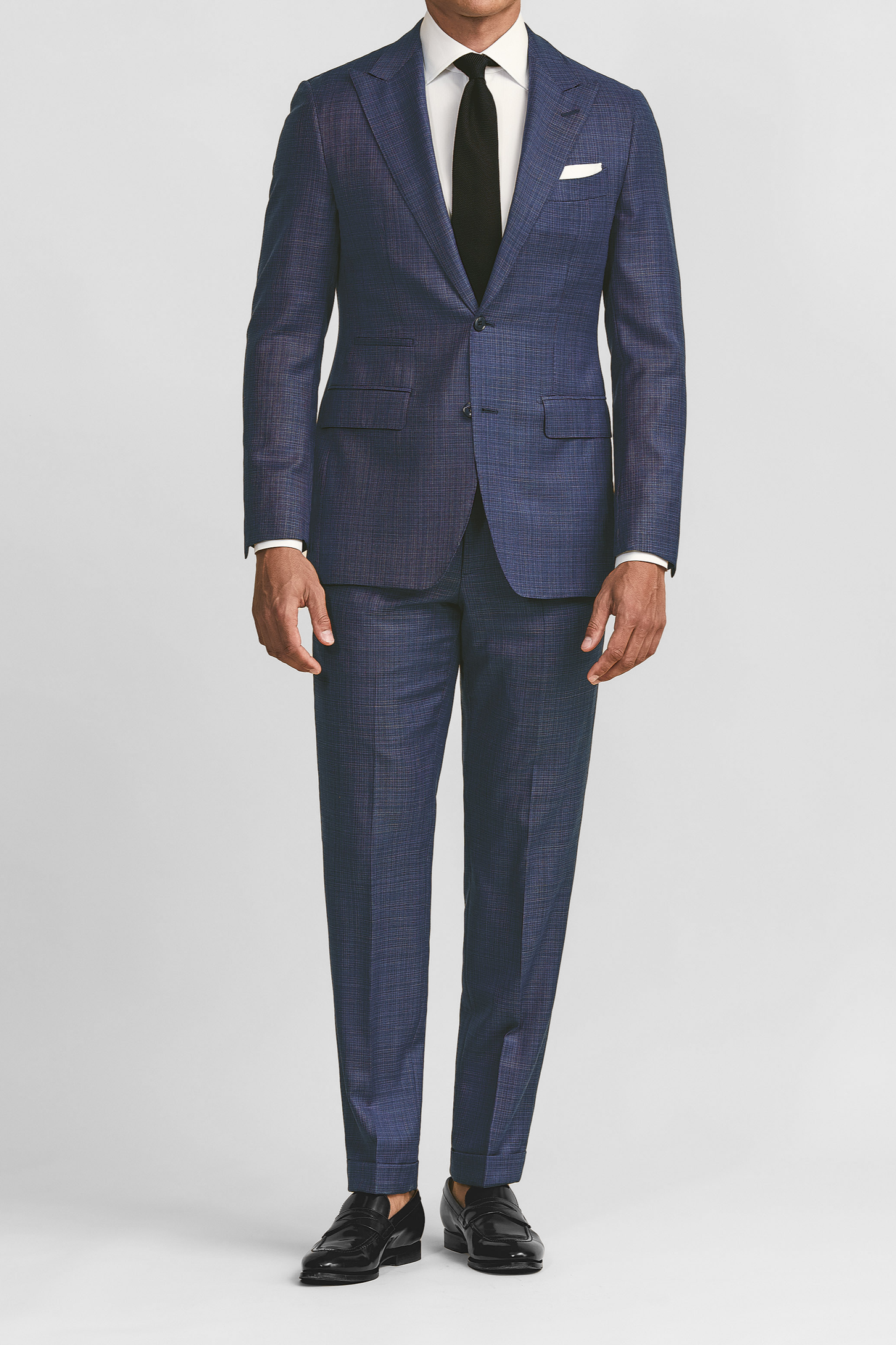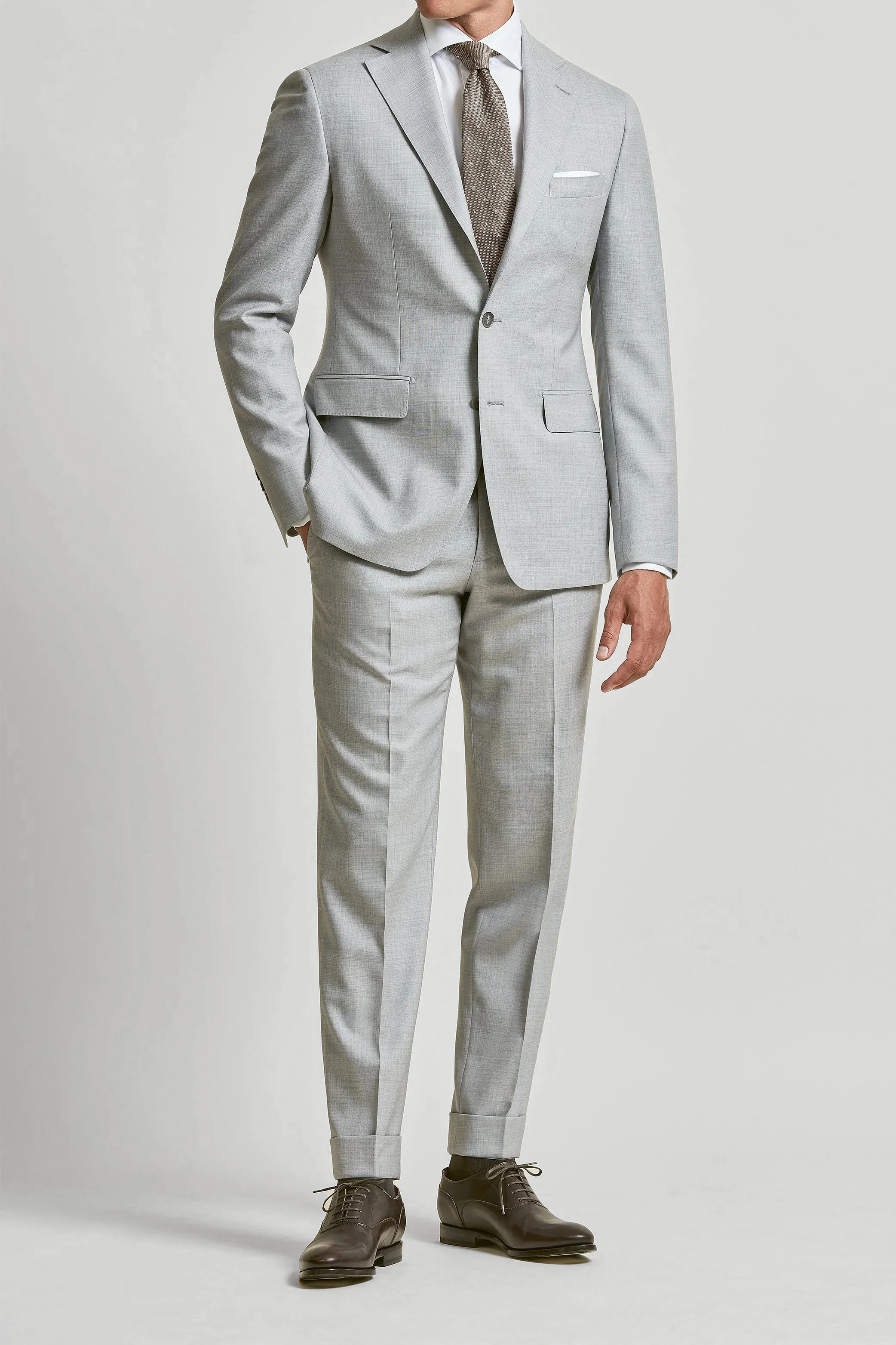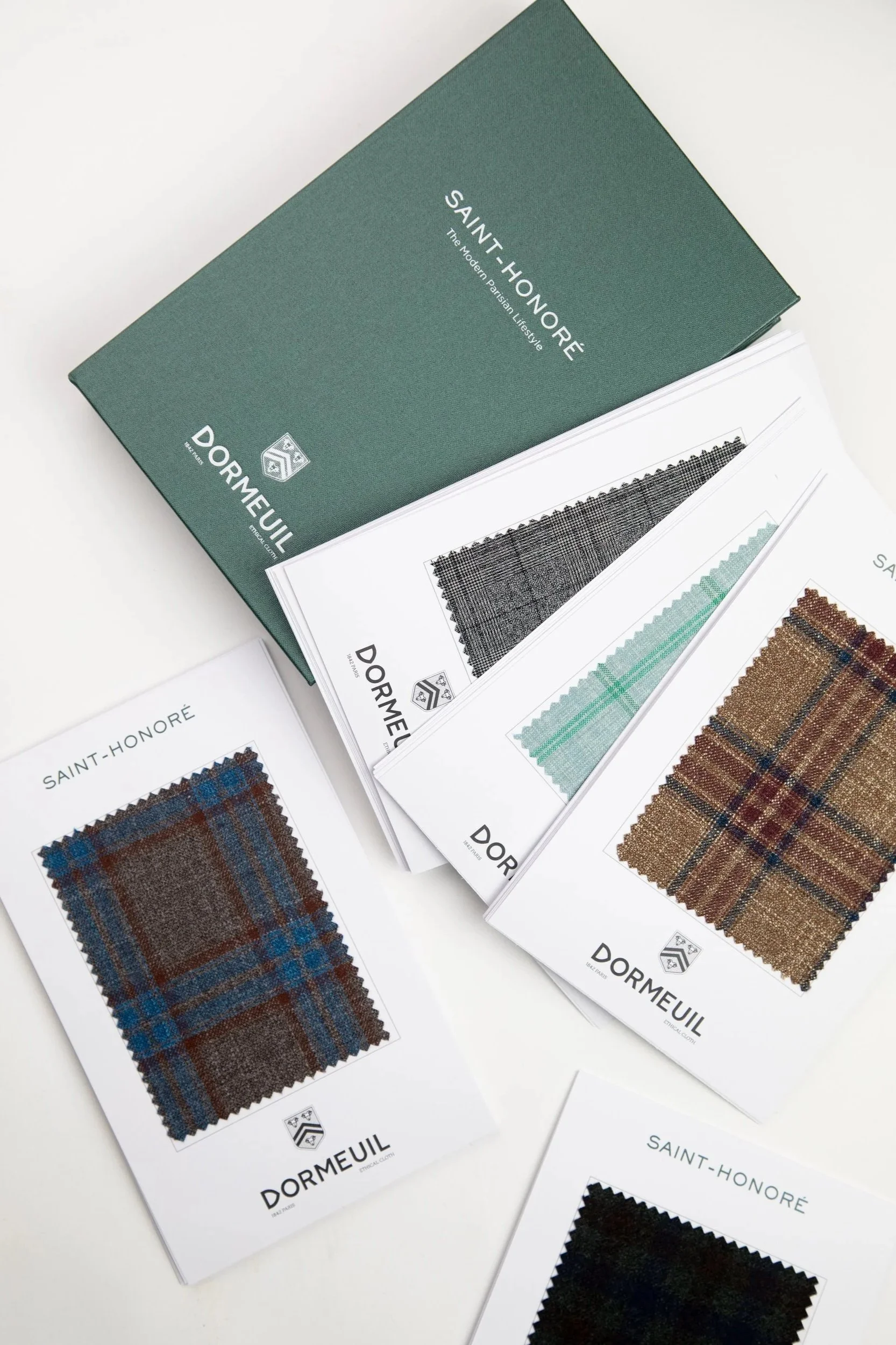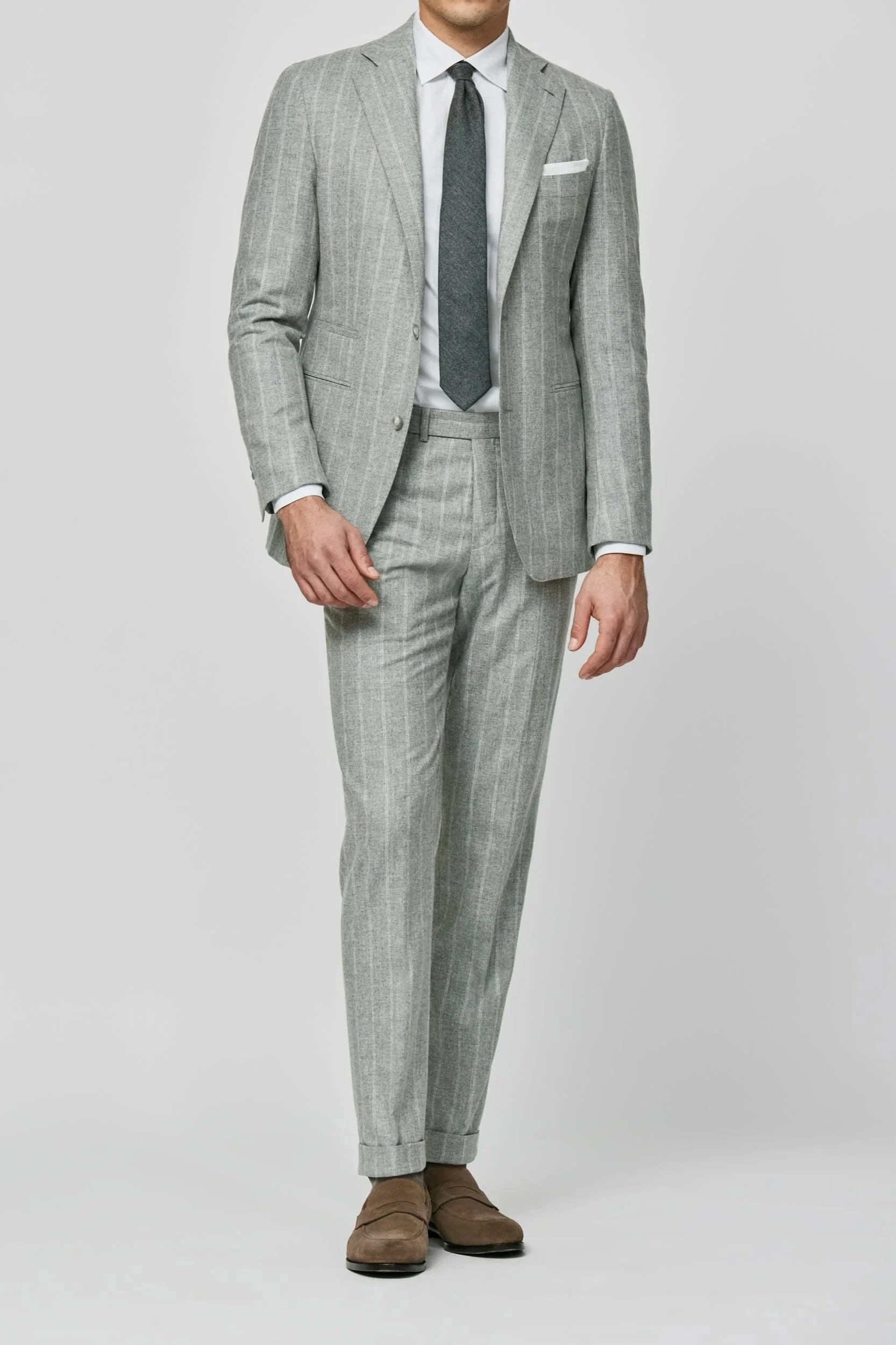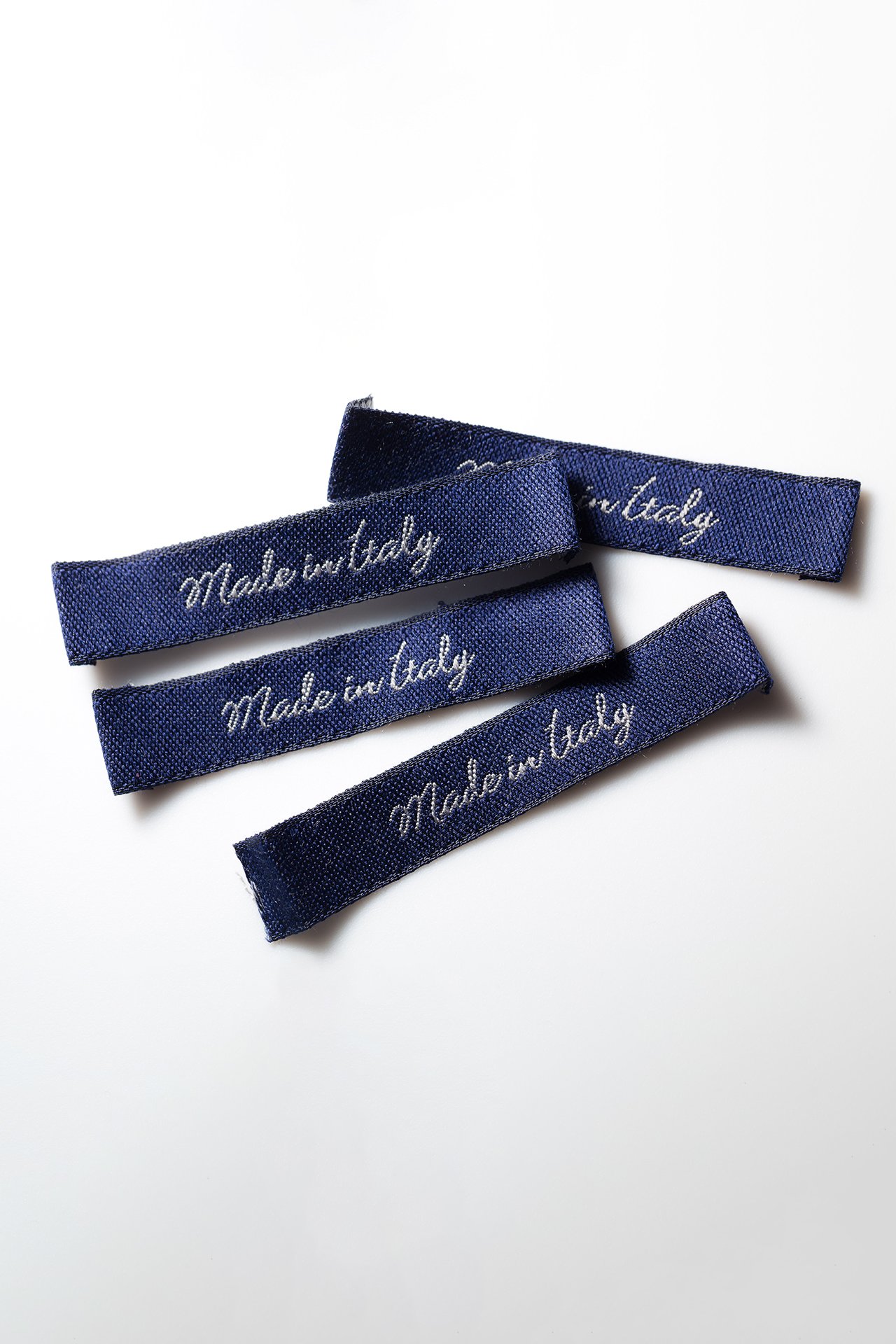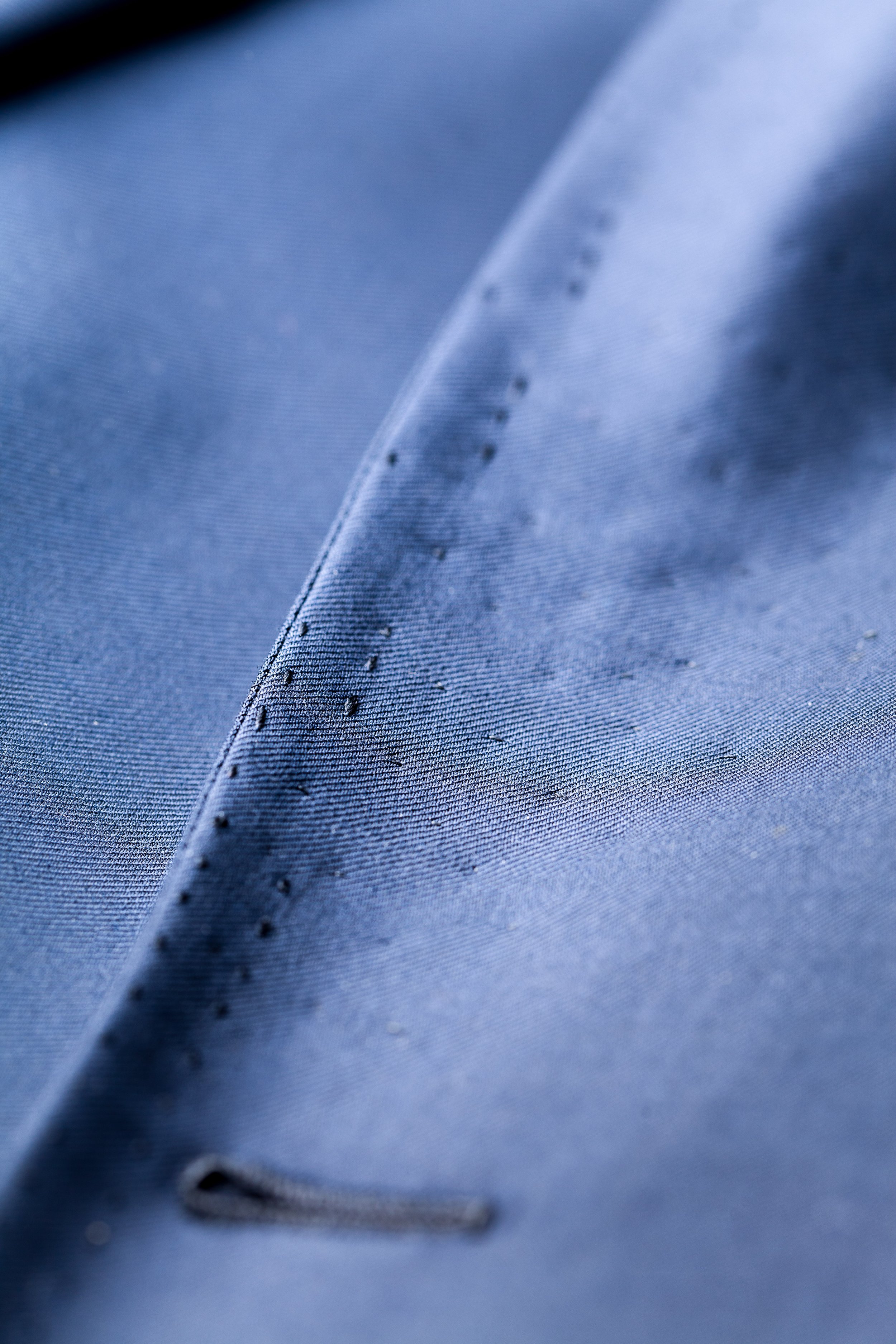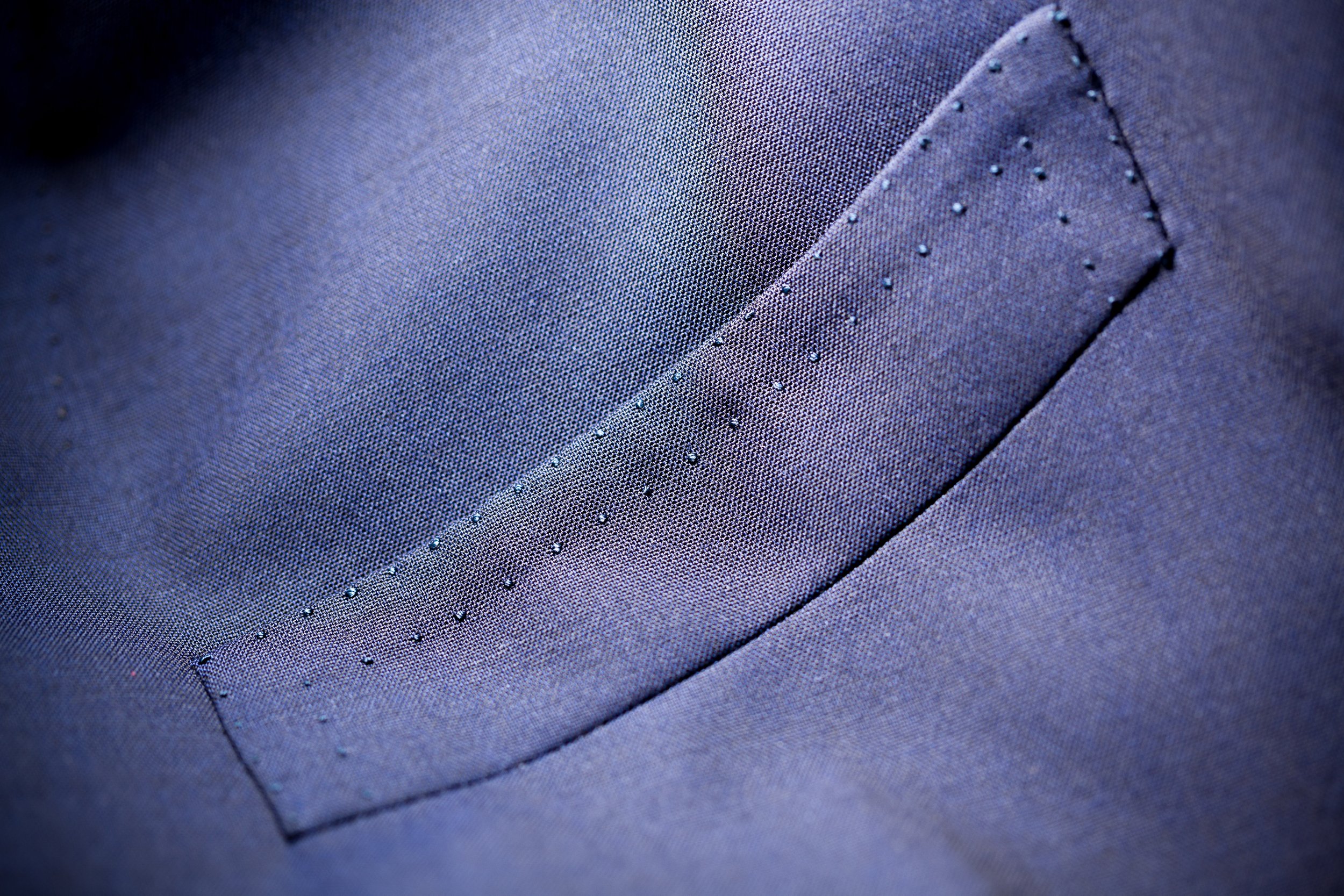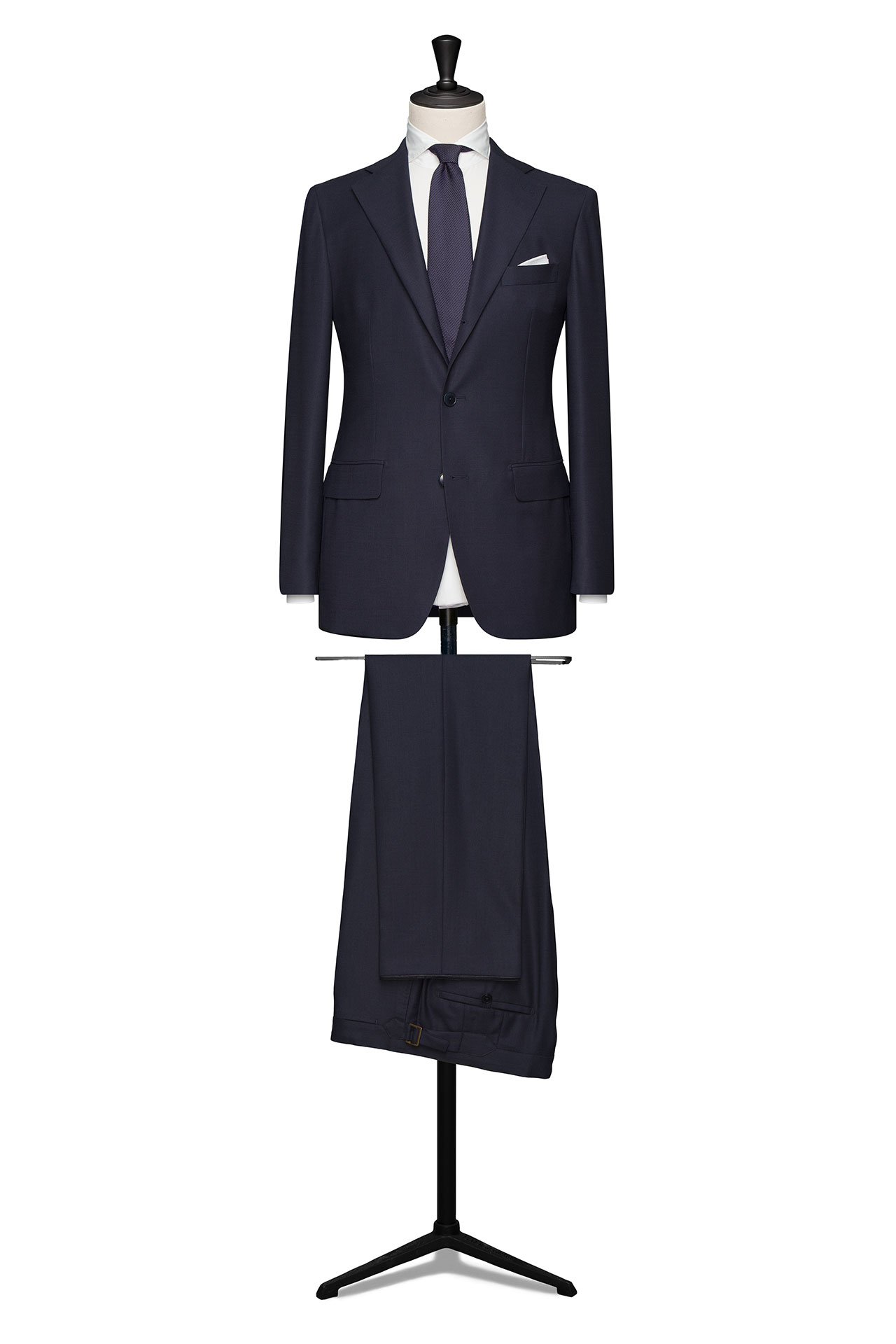| Aspect | Tweed | Brushed Flannel | Winter Weight Worsted Wool |
|---|---|---|---|
| Weave | Typically twill or plain, often with patterns (herringbone, houndstooth, checks). | Twill weave, usually solid or subtle patterns. | Worsted twill or plain weave; tightly woven with clean, sharp lines. |
| Surface Finish | Naturally textured and rough, sometimes hairy. | Smooth surface that’s been “brushed” to raise a soft nap. | Sleek, smooth finish with visible weave definition and light natural sheen. |
| Handfeel | Coarser, denser, more rustic. | Softer, smoother, more refined. | Crisp, structured, cooler to the touch than woolens. |
| Weight | Often heavier (12–20 oz), built for countryside wear. | Can range lighter (9–14 oz), wearable in city tailoring. | Typically mid-to-heavier (11–16 oz) for winter durability but without fuzziness. |
| Look | Country, heritage, casual. | More versatile—bridges casual and refined business tailoring. | Sleek, urban, formal — ideal for boardroom, business, and evening tailoring. |
| Durability vs. Comfort | Hard-wearing, built to last through rough weather. | Less rugged, but more comfortable against the skin. | Balanced — durable structure with comfort, but not as soft as brushed flannel. |
Key Functionalities of Brushed Wool
Warmth & insulation
The raised fibers (nap) trap more air near the surface, increasing thermal insulation (air pockets reduce heat loss)
Makes the fabric “cozier” in cooler weather
It feels warmer “on the skin” because of the soft fuzzy surface that reduces heat escape
Soft hand / tactile comfort
The brushing gives a luxuriously soft or plush touch (a “fuzzy hand”) that improves the sensory experience of wearing the fabric
Makes garments feel more inviting and comfortable
Better drape / fuller appearance
The raised fibers can soften the visual appearance, making the fabric appear fuller, slightly more voluminous
The texture hides minor wrinkles or folds better
Moisture handling / breathability (retained wool properties)
Because the underlying wool fibers still carry their natural capabilities, brushed wool can wick moisture and remain breathable
The nap doesn’t block breathability completely in a well-engineered weave; it enhances comfort rather than undermining it
Improved visual texture / aesthetic appeal
Adds depth, richness, and tactile character to the fabric, giving it a premium look
The fuzzy surface can catch light differently, adding subtle visual interest
Better crease resistance / shape retention
Wool already has good resilience (fibers bend and spring back); the brushed finish helps mask small creases or “wear marks” thanks to the textured surface
The nap may help “hide” minor surface imperfections over time
Perceived quality & exclusivity
Because brushing is an extra finishing process, fabrics with good nap are often seen as higher quality or more luxurious
Trade-offs / things to keep in mind
Durability: The raised fibers are somewhat more vulnerable to abrasion, pilling, or wear over time (especially in high friction zones)
Maintenance: More care might be needed (brushing, careful washing, avoiding too aggressive mechanical action)
Weight / bulk: The nap can add a bit of “bulk” or thickness; more brushing / deeper nap increases this
Cost: It’s an additional finishing step, so cost is higher than plain smooth wool
Potential shedding: Initially, loose fibers might shed until the nap stabilizes
Woolen vs. Worsted
Tweed and flannel are woolens — soft, warm, and textured from carded fibers — while worsted wools are combed smooth, giving a sleek, structured finish for sharper tailoring.
How flannel is made
Suit flannel is made by weaving wool into cloth and then brushing or “raising” the surface with fine metal rollers to lift the fibers, creating its soft, textured finish.


